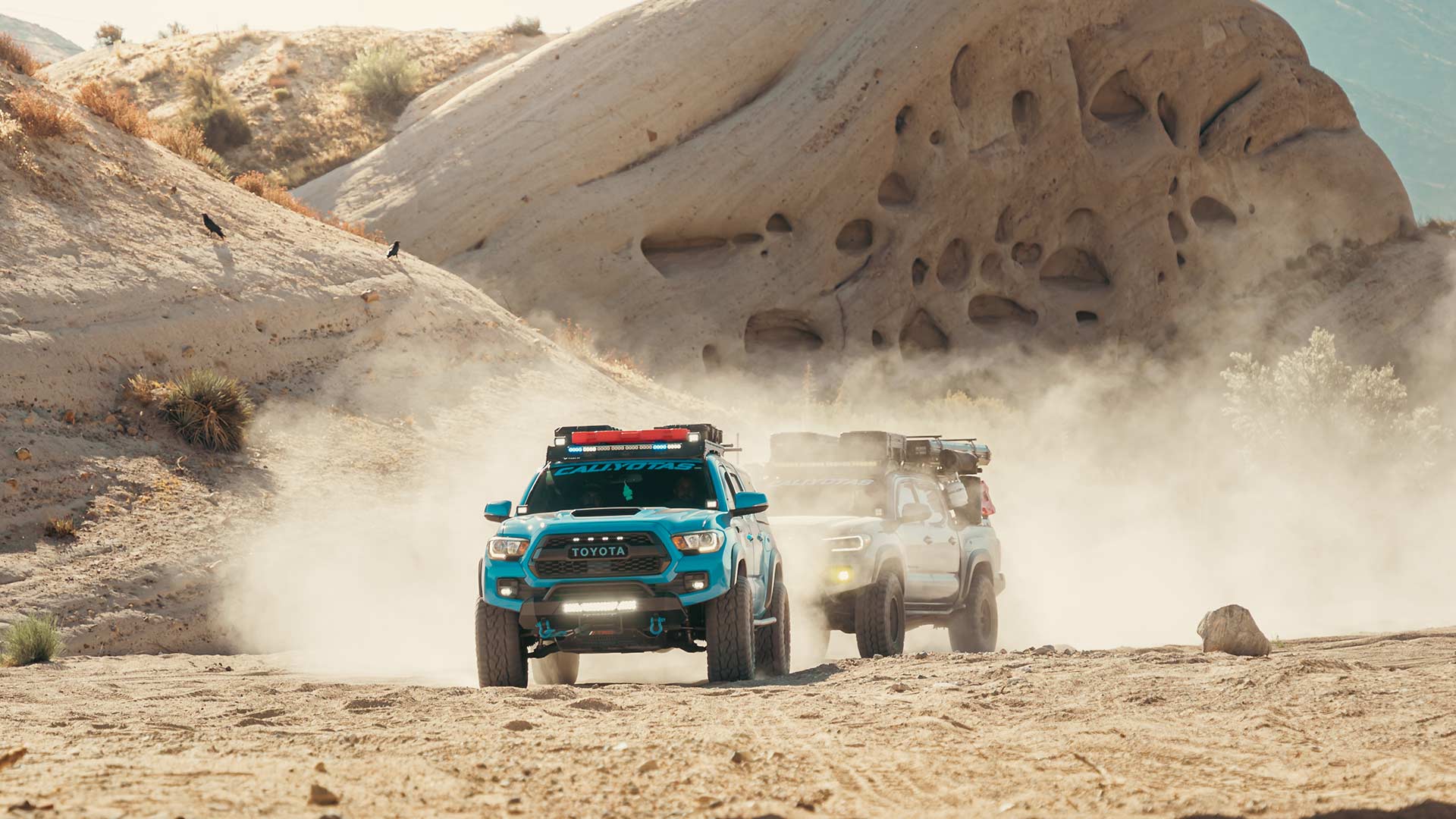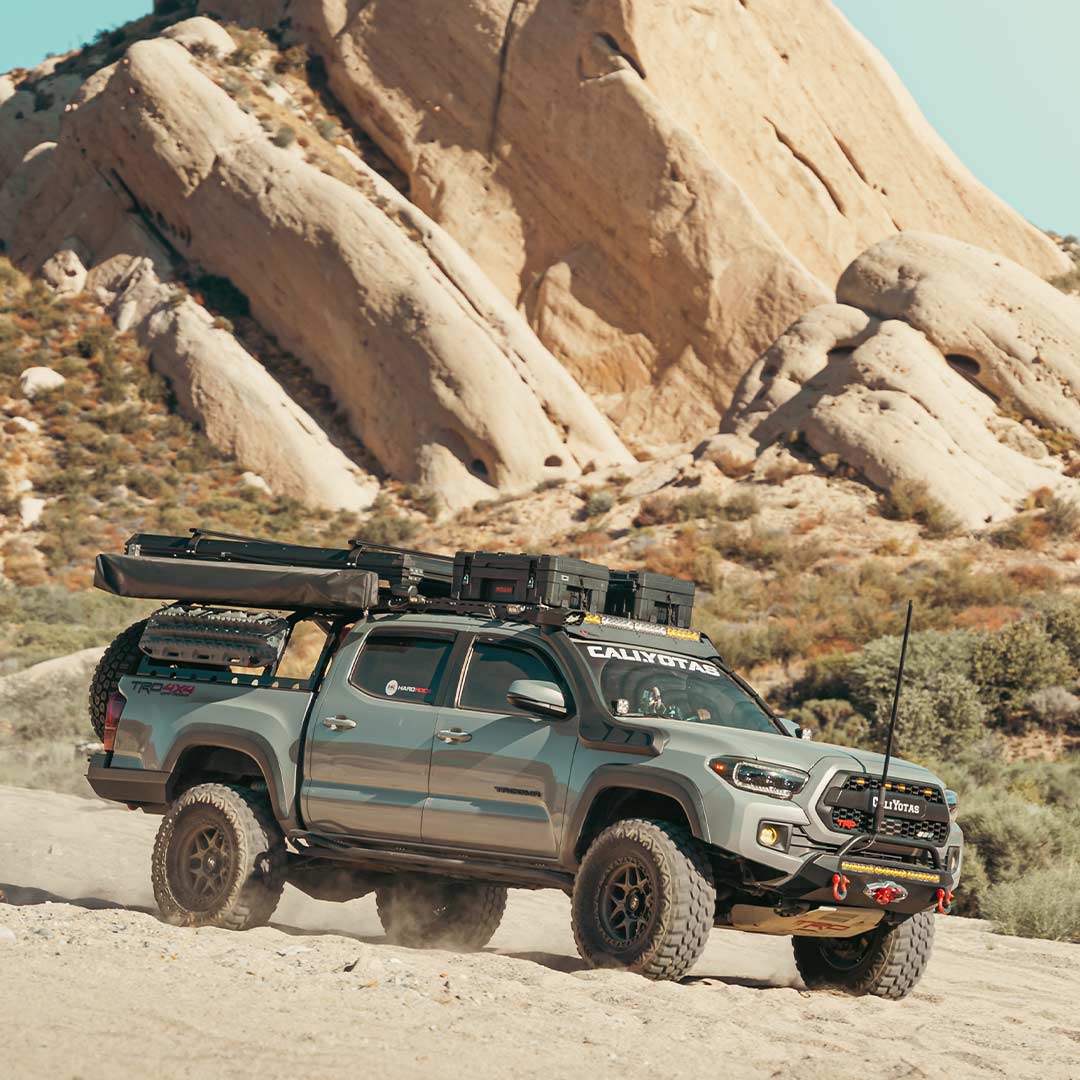Off-roading is one of the most thrilling ways to experience the great outdoors.
Whether you’re tackling rocky trails, powering through mud, or cruising over sand dunes, every adventure offers a unique mix of excitement and challenge. It’s that unbeatable feeling of freedom when your vehicle leaves the pavement behind, and your only limits are the terrain and your own skills. But, as every seasoned off-roader knows, with great adventure comes great responsibility.
In this blog, we’re diving into the essential tips and tricks that every off-roader, from beginners to seasoned pros, should know. Whether it’s mastering trail etiquette, learning how to air down your tires for better traction, or knowing when to yield the right of way, these tips will help ensure that your next off-road journey is not only fun but also safe and respectful.
Buckle up and let’s hit the trail!
Simply put, off-roading refers to driving a vehicle on roads that are not paved or established. To put it another way, you are not driving on smooth roads. This includes, but is not limited to: dirt, mud, snow, and sand. Unfortunately, not every vehicle is equipped to handle off-road driving situations. You’ll need a dedicated vehicle with special equipment and tires to tackle these rugged terrains.

Clear communication is a cornerstone of good off-road etiquette and safety.
Whether you’re navigating a tight pass, approaching an oncoming vehicle, or dealing with tricky terrain, letting others know your intentions can prevent accidents and misunderstandings. A simple hand signal, a polite honk of the horn, or flashing your lights can go a long way in ensuring everyone stays on the same page.
When approaching another vehicle on the trail, especially in areas where visibility is limited, use these signals to communicate whether you plan to yield or need to proceed. For example, a quick wave or head nod can indicate that you’re giving the right of way. If you’re part of a group, staying in touch via two-way radios can help coordinate maneuvers and make sure everyone knows what’s happening ahead.
The key to communication on the trail is to stay calm, be clear, and be courteous. A little communication can make the difference between a smooth ride and a trail mishap, so don’t be shy about signaling your intentions.
When you’re out on the trail, it’s not just about you and your vehicle—it’s about the entire off-road community.
Good trail etiquette is key to ensuring everyone has a safe and enjoyable experience. This starts with simple things like yielding the trail when appropriate, helping out fellow off-roaders when needed, and being mindful of the environment. Think of it as the “golden rule” of off-roading: treat others and the trail how you’d want to be treated!
When it comes to off-roading, right of way is more than just common courtesy; it’s about safety. Typically, vehicles traveling uphill have the right of way. Why? Because it’s harder for them to get moving again if they stop.
Larger vehicles also generally get the right of way over smaller ones since they have a tougher time navigating tight spots. Communication is key—use hand signals or a quick honk to let others know your intentions. And remember, patience goes a long way on narrow trails!
Before you hit the trail, make sure your vehicle is ready for the challenge. Start with a thorough inspection—check your tires and fluids and make sure all your recovery gear is in good shape. Pack a spare tire, an air compressor, and essential tools like a jack, shovel, and tow straps. Off-road adventures can be unpredictable, so being prepared with the right gear can keep a minor mishap from turning into a major headache.
Beyond the basics, having the right gear can make your off-road experience smoother and safer.
Must-have items include recovery gear like traction boards and a winch, a first aid kit, and reliable navigation tools like a GPS or trail app. If you’re heading into remote areas, consider bringing a communication device like a satellite phone or two-way radio to stay connected in case of emergencies. Preparation isn’t just about your vehicle—it’s about making sure you’re equipped for any situation the trail throws at you.
Off-roading can push you and your vehicle to the limits, but it’s important to know when to call it a day. Understand your vehicle’s capabilities and your own skill level. If a trail becomes too difficult, there’s no shame in turning back or finding a safer route. The goal is to enjoy the adventure, not to get in over your head.

One of the most important principles of off-roading is the “leave no trace” philosophy. As off-road enthusiasts, we get to explore some of the most beautiful and untouched parts of nature—places that many people may never see. With that privilege comes a responsibility to protect these environments for future generations. Adopting a leave-no-trace mindset isn’t just about following the rules—it’s about ensuring that the trails and wilderness we enjoy remain open, pristine, and accessible for years to come.
Off-road trails are carefully selected and managed to balance adventure with conservation. When you stick to designated trails, you’re not only protecting the environment but also preserving the off-roading experience for others. Straying from the path can damage fragile ecosystems, cause erosion, and disrupt local wildlife. In some areas, tire tracks from just one vehicle can leave a lasting scar on the landscape that may take years to recover.
Venturing off the trail can also lead to unintended consequences like getting stuck in uncharted terrain or damaging your vehicle. Moreover, trailblazing in unauthorized areas can result in trail closures or restrictions, affecting the entire off-road community. Staying on established paths helps protect the environment and keeps trails open for everyone to enjoy.
Another key aspect of the leave no trace principle is to leave the trail exactly as you found it—or better. This means packing out everything you bring in, from snack wrappers to spare parts. Even small items like cigarette butts or bottle caps can have a significant impact on the environment if left behind.
It’s also a good idea to bring along extra trash bags so you can pick up any litter you find along the way. Not only does this help keep the trails clean, but it also sets a positive example for others. Think of it as a small way to give back to the places that give us so much joy.
Off-roading often takes you through remote areas that are home to a wide range of wildlife. Respecting these creatures and their habitats is crucial to maintaining the natural balance of the ecosystems we explore. Keep your distance from wildlife, avoid making excessive noise, and be mindful of where and when you’re driving, especially during sensitive times like breeding or nesting seasons.
Additionally, never feed wildlife, as human food can be harmful to animals and disrupt their natural foraging behaviors. Observing wildlife from a distance is one of the most rewarding parts of off-roading, but it should be done in a way that minimizes impact on the animals and their habitats.
Certain areas, like wetlands, deserts, and forests, are particularly vulnerable to damage from off-road vehicles. When navigating these sensitive areas, take extra care to minimize your impact. For example, in sandy or desert environments, avoid driving over vegetation as it may take years to recover. In forested areas, stay clear of root systems and tree trunks, as even minor damage can have long-lasting effects.
If a trail is muddy or waterlogged, consider turning around or choosing an alternate route. Driving through deep mud or water can cause significant erosion and damage to the trail, making it impassable for future users. Always be mindful of your vehicle’s impact on the terrain and make choices that prioritize the long-term health of the environment.
One of the best ways to enhance your off-roading experience is by joining an off-road club or group.
Not only can you learn from experienced off-roaders, but you’ll also have a support network for tackling tougher trails and finding new adventures. Local off-road clubs often host events, trail rides, and workshops that can help you build your skills and meet like-minded enthusiasts.
There’s no substitute for experience when it comes to off-roading. Whether it’s through online forums, guided trail rides, or hands-on workshops, learning from seasoned off-roaders can give you valuable insights and techniques that you won’t find in a manual. Resources like YouTube tutorials, off-road courses, and trail guides are great ways to build your knowledge and confidence behind the wheel.
Off-roading is an incredible way to explore the outdoors, but it comes with responsibilities.
By practicing good trail etiquette, preparing your vehicle, and mastering essential off-roading techniques, you can ensure that every adventure is safe, enjoyable, and respectful of the environment. Whether you’re a seasoned pro or new to the world of off-roading, these tips and tricks will help you make the most of your time on the trail.
So, gear up, hit the trail, and enjoy the ride! To learn more; check out the how to choose the right off-road tires, how to read off-road tires, and how to extend the life of your off-road tires articles.